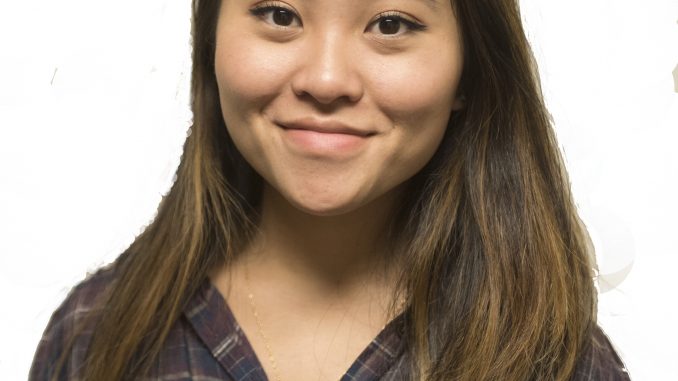
 On the corner of 11th Street and Montgomery Avenue, pieces of steel in the shape of clouds hang from the outside of Montgomery Garage. The sculpture, titled “Sky Terrain,” lights up at night in different colors to imitate the various hues of the sky.
On the corner of 11th Street and Montgomery Avenue, pieces of steel in the shape of clouds hang from the outside of Montgomery Garage. The sculpture, titled “Sky Terrain,” lights up at night in different colors to imitate the various hues of the sky.
“Sky Terrain,” along with the Bell Tower and the bust of Russell Conwell in the Founder’s Garden, are a few pieces of public art on Main Campus. But Verdant Temple, the university’s landscape development plan, will work to incorporate more public art on campus over the next 20 years.
The university should seize the opportunity to invite residents to use their voices so that they can feel a part of the space they share with students.
“Art is important because it connects us to a consistent view of humanity for a variety of perspectives,” said Robert Blackson, director of exhibitions for Temple Contemporary. “And in so doing, what art does is it challenges us to recognize what it is that we’re actually seeing.”
Public art has the capacity to reach not just students who already appreciate art, but also those who may not normally have an interest.
“It will cause you to stop and think outside of your normal routine,” James Templeton, the director of architecture for the school’s project delivery group, who will lead with a committee to find spaces for public art on campus, told The Temple News last month.

“We are so structured, we are so in this routine,” he added. “To see something out of the ordinary in places where you don’t expect, or places where you do expect … it really serves to break up monotony.”
Public art also serves to create unity. The Bell Tower, for example, is where students congregate during the day, celebrate pep rallies before football games and demonstrate in protest. It often serves as a unified, visual representation of the university community.
And as more displays of public art appear on campus, the university has the opportunity to unite and engage, not only with the student body, but also with North Philadelphia residents.
“I think having some public art gives the opportunity to recreate spaces and make them more accessible,” said Cathy Harris, director of community murals at Mural Arts Philadelphia.
Future public artworks should be used strategically to create dialogue with the surrounding community and to improve the university’s relationship with residents.
“People will tend to feel like they’re being pushed out when universities start to grow and take over more space, but there’s a way to have public art work collectively with their communities,” Harris said. “It’s a way that can make art heal and help bridge that gap.”
Part of the Verdant Temple plan includes adding to Columbia Plaza on Polett Walk near Cecil B. Moore Avenue. Perhaps the university could use this opportunity to create public art that could honor Moore, a civil rights activist influential in the desegregation of Girard College. Or, it could include community members in the creation of the artwork.
Ultimately, public art serves to create an open conversation and appreciation for art that may not have previously existed. Main Campus could certainly benefit from this expression and engagement with students and the North Philadelphia community.
Samantha Wong can be reached at samantha.wong@temple.edu.



Be the first to comment